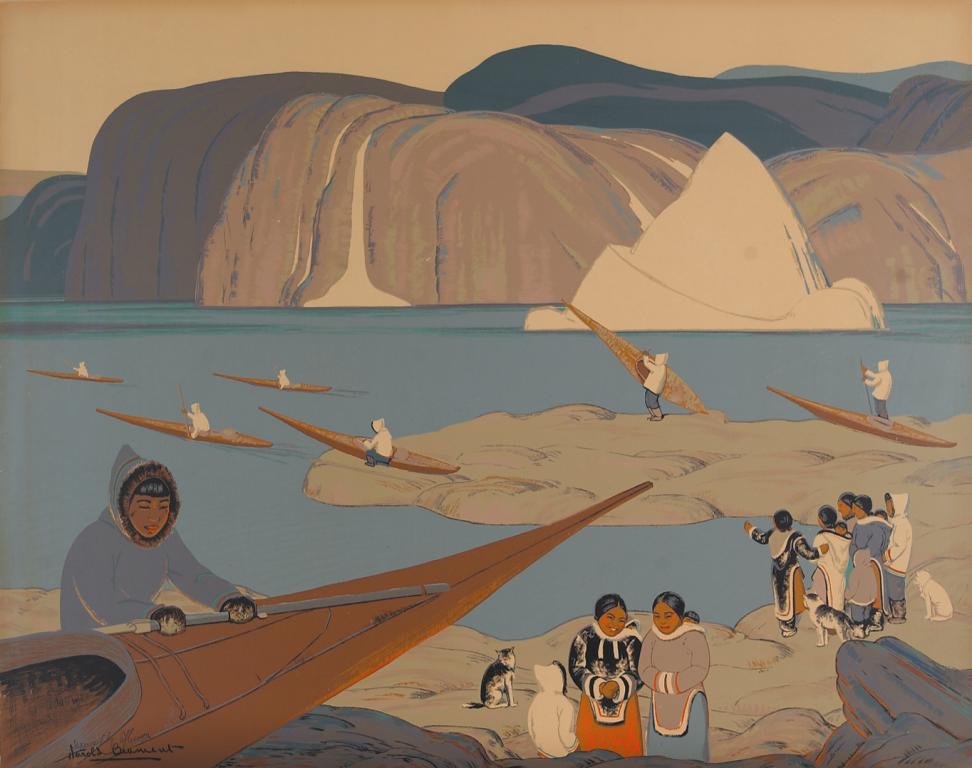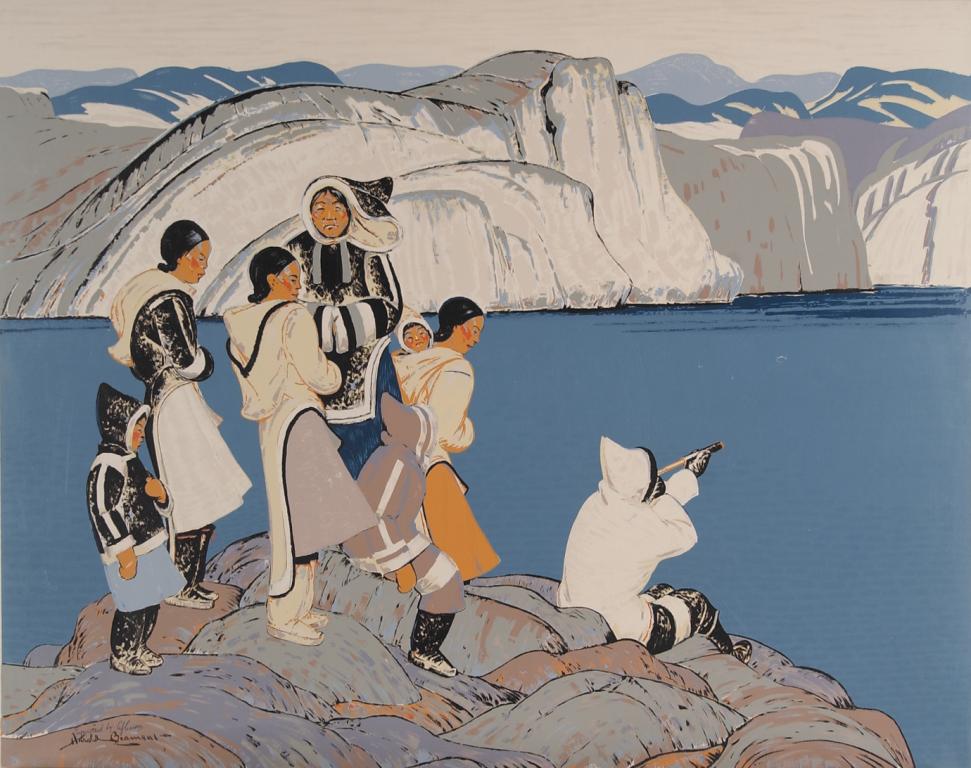Born in Ottawa, Canadian artist Thomas Harold Beament served in the Royal Canadian Navy during World War I. He was a landscape, figurative and marine painter and printmaker using a decorative, realistic style. Beament studied law but also attended the Ontario College of Art in 1922 where he trained under J.W. Beatty. He settled in Montreal, where he was a graphic designer, teacher and commander of a division of RVMRC in peacetime.
Beament developed a style of decorative realism in his painting and taught at the Montreal Museum of Fine Art. He received the coveted Jessie Dow Prize in 1935 at the Montreal Spring Exhibition. He enlisted in the navy again in 1939 and then from 1943 to 1947, becoming one of the few official war artists. He became an associate of the Royal Canadian Academy in 1936 and full member in 1947, serving as President of the RCA from 1964 to 1967.
After retiring from the navy in 1947, Beament embarked upon a journey to live with and study Inuit peoples of Baffin Island. Along with Lawren Harris and A. Y. Jackson, he was one of the first artists to explore the Arctic, the Inuit people and their culture. It was during these trips that Beament produced the work for which he is most famous and introduced Canadians to a people that were happy living in some of the most remote locations on Earth.
In 1955, he was honoured to design a ten-cent stamp with Inuit figures for Canada Post. The drawings and paintings he made at this time of the area and its people are regarded among his greatest works of art.
‘Departure for the Hunt’ recognizes a valuable time in the life cycle of the North – the excitement of the day, the dangers of the bay, and the beauty of its rhythms. Unlike Harris and Jackson, on the Arctic trips Beament saw a fragile culture and focused more on the interplay of the characters than on the grandness of the landscape. It is there as well, but as an awesome backdrop as opposed to the focal point. The warmer yellow tones play on the feeling of the moment as opposed to the bleakness of the landscape.
Beament would have seen a time when the Canadian military Operation Musk-Ox had just been completed (1946). The ‘High North’ was now changing from centuries old behavioural patterns to modernisation due to new accessibility. Overall, this silkscreen is a highly composed final homage to Northern life.
‘Waiting Ones’ is about the anticipation of the hunting party to return home. Women and children stand stoic vigil, proud and anticipating family reunion. Beament captured this emotionally charged scene of the basic, life-sustaining moments in an unforgiving place, at a time when the old ways were changing.
Beament also made Inuit lithographs for the Queen Elizabeth Hotel in Montreal. His work is held in collections including the National Gallery of Canada, The Dominion Archives, The Montreal Museum of Fine Arts, The Museum of the Province of Quebec and the Seagram Collection. He lived in Montreal, Quebec until his death in 1984.

